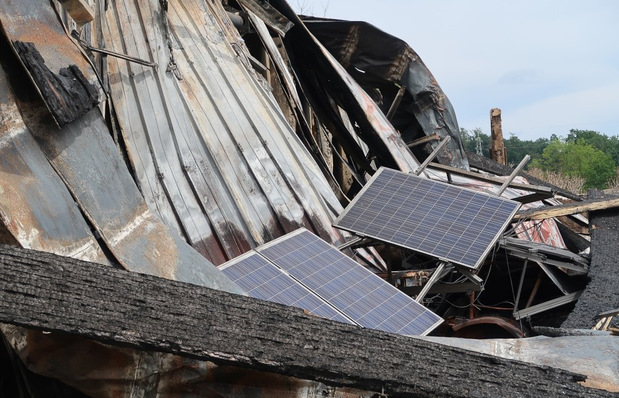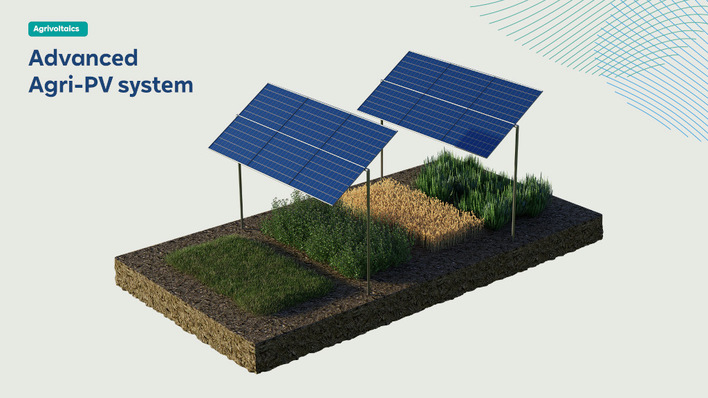The call from society is getting louder: politics must do more for climate protection. Photovoltaics, i.e. the conversion of sunlight into electrical energy, is undisputedly an important component of the energy transition. Today, photovoltaics already contribute a considerable share to the energy mix. At the end of 2020, PV modules with a nominal capacity of 54 GW were installed in Germany, distributed across two million systems. In 2020, these generated 50.6 TWh and thus 9.6 % of gross electricity consumption in Germany. On sunny days, PV electricity actually covers two-thirds of current electricity consumption at times. Thanks to the rapid drop in module prices, new large-scale megawatt systems generate electricity for 3 - 5.5 cents/kWh, while small rooftop systems are somewhat more expensive at 6 - 11 cents/kWh, but overall they are already cheaper than fossil-fuel power plants. This development is likely to continue in the long term, even though module prices have recently risen due to supply bottlenecks in the wake of the Corona pandemic. The following trends emerge from these facts:
Trend 1: Solar projects are getting bigger

Lapp
Due to lower generation costs, large-scale plants have a price advantage. A look at Austria shows: It is not only economies of scale in terms of costs that speak for ever larger plants; the country's ambitious expansion targets simply cannot be achieved with small plants. Austria is therefore relying on large PV parks, such as the one in Schönkirchen-Reyersdorf northeast of Vienna. Austria's largest open-space photovoltaic plant went into operation there in 2020. It consists of 34,600 modules on an area of 13.3 hectares, which corresponds to about 18 football fields. Together, they generate 11.5 megawatts and produce almost 11 gigawatt hours of electrical energy per year, which corresponds to the consumption of 3,400 households.
But this is peanuts compared to the largest plants worldwide. The Saemangeum project in South Korea has built three PV parks with a peak output of 99 megawatts each. The records are breaking almost every month. Currently, the Bhadla solar park in India is number 1 on the list with 2245 megawatts and an area of 57 square kilometres, equivalent to about 8000 football fields.
Trend 2: Resilience becomes more important
The flood in western Germany in mid-July was probably just a foretaste: climate experts expect extreme weather events to become more frequent in the future. This has implications for the construction and maintenance of PV systems. UV radiation is likely to increase, as are wind speeds and hail precipitation. The modules must be able to withstand this, as must the electrical connection systems. And if a plant is destroyed, it should be rebuilt as quickly as possible. This requires logistics that can set up new generation capacities within days, if not hours. The same applies to natural disasters such as earthquakes or volcanic eruptions.
See also: Georg Stawowy of Lapp Holding AG: All Electric Society needs 100 per cent renewable electricity
Suppliers must therefore have all the common components for building a PV plant available from stock in many regions of the world, so that replacements are quickly on site in an emergency. In the Corona pandemic, many supply chains collapsed. For example, the PV industry is currently experiencing bottlenecks in the supply of modules, but also of accessories such as module racks or electronic components for the inverters. Here, companies with resilient supply chains that can also assist with customs formalities have an advantage.
Trend 3: Photovoltaics is becoming more efficient
This does not refer to the efficiency of PV modules, which has been increasing for decades and will continue to reach new records - also in the future. Rather, we are talking about efficiency in production, installation and disposal of the modules. For monocrystalline PV modules, CO2 emissions of 35 to 57 grams per kilowatt hour are calculated, which are mainly generated during production. This value is far below that for fossil energy producers and is constantly decreasing, also because solar power makes the energy mix cleaner and thus in turn reduces emissions during production. In addition, there is a take-back obligation for solar modules in Europe. Large parts of the modules, such as aluminium frames and glass, are recycled.
Read more: PV and agriculture
There is further potential for savings during installation, especially in large systems. There, thousands and thousands of the same modules are always installed at the same intervals, which means that the installers can use pre-assembled cables of the right length, which they only have to plug in. This saves time and eliminates defects that can never be completely ruled out with manual assembly on the construction site.
Trend 4: Grids and storage units are being upgraded for renewable energies
When the sun shines, photovoltaics already cover up to two-thirds of current electricity consumption in Germany. When the weather is bad, other renewable generators, such as wind energy, have to supply or storage units have to step in. There are dozens of ways to do this, from storage in electric vehicle batteries to mechanical pumped storage and the great hope of hydrogen. Because this will make the energy grid more decentralised, it must be expanded and, above all, made smarter.
Trend 5: Solar systems are becoming more diverse
Either on the existing roof or on a field - these have been the options for building PV systems up to now. But there are only a limited number of house roofs, and on open spaces solar power generation competes with other types of land use. In recent years, a number of other options have emerged:
- Facade-integrated PV: The idea behind this is that a house needs walls, windows and roof tiles anyway and that solar cells can be integrated directly there.

ARTIS - Uli Deck
- Agri-PV: In Germany there are almost 17 million hectares of usable agricultural land. Examples in other countries show that PV systems can preserve fertile soils for shade-loving plants and create species-rich biotopes - and can actually be grazing land for sheep.
- PV in streets: Here, modules could be integrated into noise barriers or actually as surfacing in the roadway. On railway lines, modules could be laid on the sleepers between the rails. Tests in this area are promising, but some authorities are struggling to obtain approval.
- Floating PV: Starting in 2022, a floating solar park is to be built on the Indonesian island of Batam. It will have a capacity of 2200 megawatts and cover around 16 square kilometres on the Duriangkang reservoir. Fraunhofer ISE estimates that 2.74 GW can be economically generated in Germany with floating PV. Lakes from disused open-cast mining are particularly suitable. On a quarry pond in Weeze, a gravel pit operator has launched a 150 by 50 metre solar island with 750 kW for self-sufficiency.
Also interesting: Turning high-rise buildings into batteries
The cables used in such photovoltaic systems not only have to withstand wind, weather and UV radiation, but in the future they may be permanently submerged under water (floating PV), exposed to increased vibrations (PV in rails) or have to disappear as invisibly as possible behind a glass facade.
These and several other trends will shape the photovoltaic market in the coming years. Lapp is well prepared for this. The company offers a broad portfolio of components for connection technology. For example, connection systems from Lapp are used in the PV plants in Schönkirchen-Reyersdorf and Saemangeum. The cables of the world market leader in connection technology are also used in the largest solar park in the Dominican Republic and in large solar plants in South Africa. With Ölflex Connect, the company offers ready-made cables for faster installation, which only have to be plugged in by the fitters on site.
However, Lapp is not only a sought-after partner with its product portfolio, but also with its just-in-time construction site logistics and is prepared for worldwide demand with global delivery processes. Increasingly, the company is taking on a leading role in the planning and management of large projects, such as the construction of a high-voltage route through the centre of Braunschweig, where Lapp is acting as general contractor. Lapp is also expanding its expertise in other areas of renewable energies, such as large-scale wind energy projects or the construction of energy storage systems. The orientation of the portfolio towards sustainable sectors and the associated project support strengthen Lapp's offer of holistic solutions from a single source. (nw/mfo)
Did you miss that? PV and agriculture








